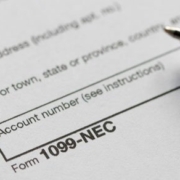INDIVIDUAL ESTIMATED TAX PAYMENTS FOR 2013 START SOON
On December 22, 2017, The Tax Cuts and Jobs Act was signed into law. The information in this article predates the tax reform legislation and may not apply to tax returns starting in the 2018 tax year. You may wish to speak to your tax advisor about the latest tax law. This publication is provided for your convenience and does not constitute legal advice. This publication is protected by copyright.
 Our tax system is a “pay-as-you-go” system, and if your pre-paid amount is not enough, you become liable for non-deductible interest penalties. To facilitate that concept, the government has provided several means of assisting taxpayers in meeting the “pay-as-you-go” requirement. The primary among these include:
Our tax system is a “pay-as-you-go” system, and if your pre-paid amount is not enough, you become liable for non-deductible interest penalties. To facilitate that concept, the government has provided several means of assisting taxpayers in meeting the “pay-as-you-go” requirement. The primary among these include:
- Payroll withholding for employees;
- Pension withholding for retirees; and
- Estimated tax payments for self-employed individuals and those with other sources of income not covered by withholding.
Determining how much tax to pre-pay through withholding and estimated tax payments has always been difficult, but thanks to Congress’ constant tinkering with the tax laws, ensuring there are no underpayment penalties or tax surprises when the tax return is prepared next year can be challenging.
There are several new tax laws and changes taking effect in 2013 that add complexity to estimating one’s tax liability including: higher ordinary tax rates, higher capital gains tax rates, the phase out of exemptions and itemized deductions for higher income taxpayers, the new 3.8% tax on net investment income and .9% increase in self-employment tax for upper-income self-employed individuals, not to mention myriad of extended and sun setting tax provisions.
When a taxpayer fails to prepay a safe harbor (minimum) amount, he or she can be subject to the underpayment penalty. This penalty is the short-term federal rate plus 3 percentage points and the penalty is computed on a quarter-by-quarter basis. So, even if you pre-pay the correct amount for the year, if the amounts are not paid evenly you could be subject to a penalty. Interestingly enough, withholding amounts are treated as paid ratably throughout the year, so taxpayers who are underpaid in the earlier part of the year can compensate by bumping up their withholding in the later part of the year.
Federal tax law does provide ways to avoid the underpayment penalty. If the underpayment is less than $1,000 (referred to as the de minimis amount), no penalty is assessed. In addition, the law provides “safe harbor” prepayments. There are two safe harbors:
- The first safe harbor is based on the tax owed in the current year. If your payments equal or exceed 90% of what is owed in the current year, you can escape a penalty.
- The second safe harbor is based on the tax owed in the immediately preceding tax year. This safe harbor is generally 100% of the prior year’s tax liability. However, for a higher income taxpayer whose AGI exceeds $150,000 ($75,000 for married taxpayers filing separately), the prior year’s safe harbor is 110%.
Example: Suppose your tax for the year is $10,000 and your prepayments total $5,600. The result is that you owe an additional $4,400 on your tax return. To find out if you owe a penalty, see if you meet the first safe harbor exception. Since 90% of $10,000 is $9,000, your prepayments fell short of the mark. You can’t avoid the penalty under this exception.
However, in the above example, the safe harbor may still apply. Assume your prior year’s tax was $5,000. Since you prepaid $5,600, which is greater than 110% of the prior year’s tax (110% = $5,500), you qualify for this safe harbor and can escape the penalty.
If your state has a state tax, the state’s de minimis amount and safe-harbor percentage and amount may be different.
This example underscores the importance of making sure your prepayments are adequate, especially if you have a large increase in income. This is common when there is a large gain from the sale of stocks, sale of property, when large bonuses are paid, when a taxpayer retires, etc.
If you have questions regarding your pre-payments or would like to review and adjust your W-4 payroll withholding, W-4P pension withholding, and estimated tax payments to provide the desired tax result for 2013, please give this office a call.








Leave a Reply
Want to join the discussion?Feel free to contribute!